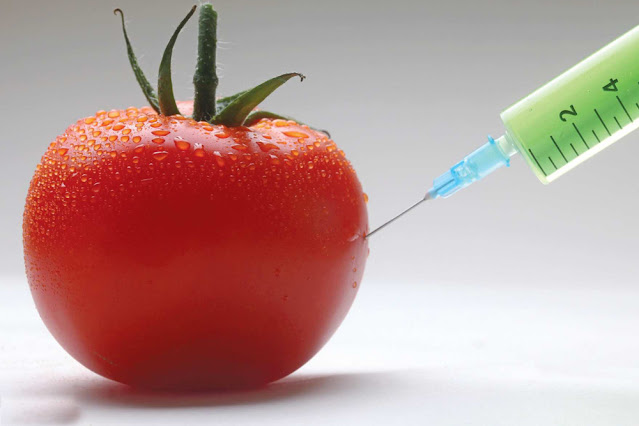U.S. Ethanol Market Will Grow At Highest Pace Owing To Increased Blending Mandates
 |
| U.S. Ethanol Market |
The U.S. ethanol market provides a clean-burning, high-octane fuel option that aids in reducing greenhouse gas emissions from the transportation sector. Produced from corn and other plant materials, ethanol is blended with gasoline to increase its oxygen content. This improves combustion and allows engines to burn fuel more completely. Ethanol blending reduces petroleum imports and supports domestic employment by increasing demand for feedstocks.
The
global U.S. ethanol market is estimated to be valued at US$ 32.70 billion in 2024 and is expected to exhibit a CAGR of 9.0% over the forecast period
2024 to 2031.
Key Takeaways
Key players operating in the U.S.
Ethanol Market Growth are Boehringer Ingelheim, Zoetis, MSD Animal Health
(Merck Animal Health), Elanco Animal Health, Ceva Santé Animale, Virbac, Bayer
Animal Health, Vetoquinol, Huvepharma, IDT Biologika, Merial (now part of
Boehringer Ingelheim), Heska Corporation, Dechra Pharmaceuticals, Phibro Animal
Health, Neogen Corporation. These companies collectively account for a
substantial share of the market. Boehringer Ingelheim, Zoetis, and MSD Animal
Health are among the three largest players in the industry.
The demand for ethanol is increasing due to state and federal mandates that
require higher blends of renewable fuels like ethanol to be blended with
gasoline. The Renewable Fuel Standard implemented by the EPA has increased the
required ethanol blending volumes over the years. E10 blending, which is 10%
ethanol and 90% gasoline, is now standard across all states. Some states also
allow E15 and E85 fuels to expand ethanol use.
Technological advancements have improved ethanol production processes and
reduced costs. Enzymes and genetically modified yeast and corn strains have
boosted yields. Development of cellulosic ethanol, which converts non-edible
plant fibers into fuel, promises to further growth without competing for food
crops. Integrated biorefineries combine ethanol with higher-value chemicals to
enhance profits.
Market Trends
The US government has expanded the corn ethanol program through tax credits and
the RFS2. This policy support has grown the industry and led ethanol makers to
invest in more production capacity. However, recent exemptions and retroactive
changes to the RFS have created uncertainty. Most analysts expect the RFS
volumes to remain flat or decline slightly going forward.
Feedstock innovation is another trend, as manufacturers search for lower-cost
cellulosic sources. Switchgrass and other dedicated energy crops show promise
but have not yet reached commercial scale. The potential exists to reduce
dependence on corn and possibly lower costs if cellulosic technology advances.
Market Opportunities
One growth opportunity lies in increasing the allowable ethanol content in
motor gasoline above the current E15 maximum. Raising the ethanol "blend
wall" could boost demand if manufacturers can demonstrate compatibility
with engines and infrastructure. Automakers increasingly produce flex-fuel
models that can run on virtually any ethanol blend up to E85.
Expanding US ethanol exports also presents a chance for market expansion.
International demand is rising in countries like China, India, Brazil and
others that are blending more ethanol into their gasoline pools. Trade
agreements that eliminate or reduce tariff barriers will encourage more US
ethanol exports.
Impact of COVID-19 on the U.S. Ethanol
Market
The COVID-19 pandemic has significantly impacted the U.S. ethanol market.
Lockdowns and travel restrictions imposed by various states led to a decline in
fuel demand as people drove less during the ongoing crisis. This negatively
impacted the consumption of ethanol-blended gasoline, which accounts for about
90% of total ethanol demand in the United States. Ethanol plant production also
dropped due to excess inventory levels and low gasoline blending rates. As
gasoline demand is closely linked to overall economic activity, the
pandemic-induced recession in 2020 severely affected the ethanol industry.
However, things are gradually looking up for the market post-COVID. Gasoline
demand has rebounded as lockdowns have eased across most states. Additionally,
the Biden administration's increased focus on renewable fuels is expected to
provide stimulus to ethanol consumption going forward. The Environmental
Protection Agency has also proposed higher biofuel blending mandates under the
Renewable Fuel Standard program for 2022, which will drive ethanol blending
volumes. Furthermore, rising oil prices amid the ongoing Russia-Ukraine
conflict are making ethanol an attractive alternative fuel option. With
economic activity picking up pace and supportive government policies in place,
the U.S. ethanol market is poised to recover from the pandemic blues over the
coming years.
In terms of geography, the Midwestern United States accounts for the majority
of the market value as this region has ideal growing conditions for corn and is
home to major ethanol production facilities. States like Iowa, Nebraska,
Illinois and Minnesota have large number of corn-based ethanol plants and
together account for over 60% of the nation's ethanol output. The close
proximity of these production hubs to domestic gasoline markets enables
cost-effective transportation of ethanol. The Plains region stretching from
Texas to the Dakotas is also an important market, supported by expanding
exports from Gulf Coast ports.
On the other hand, growth is strongest in the Western United States. While the
market size remains smaller currently due to limited local production, states
like Colorado and California are witnessing rapidly growing consumption of
ethanol-blended gasoline aided by their low-carbon fuel standards. Several new
ethanol plants are also being planned or expanded in the Rockies and Western
regions to cater to this rising demand from population centers like Denver,
Phoenix, Las Vegas and the entire West Coast. With their focus on renewable
blending mandates, the Western states are emerging as important high growth
territories for the U.S. ethanol market.
Get
more insights on U.S.
Ethanol Market



Comments
Post a Comment